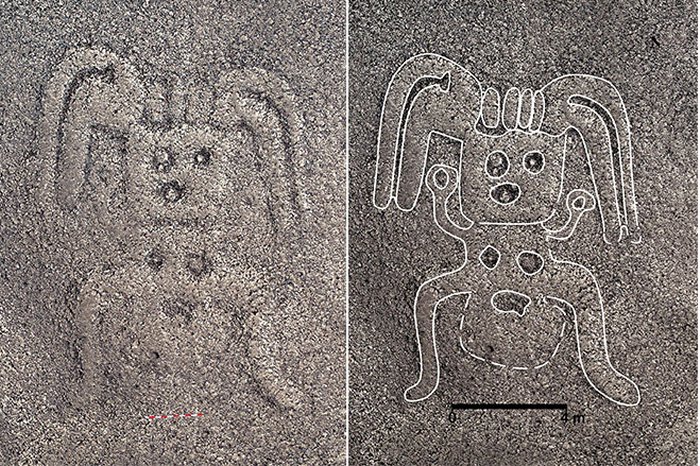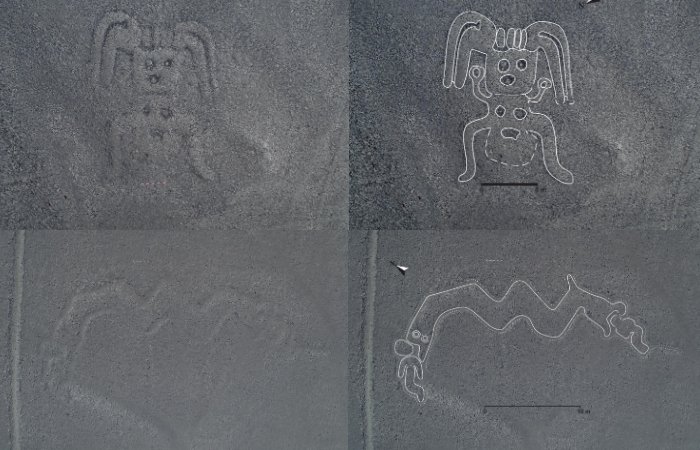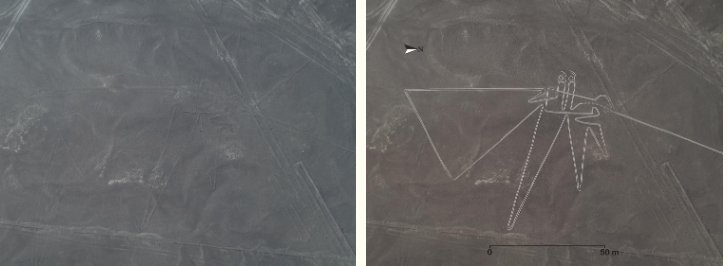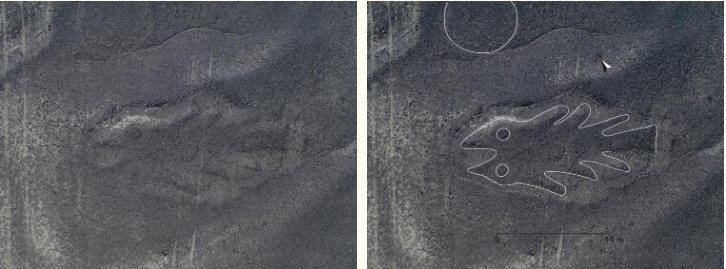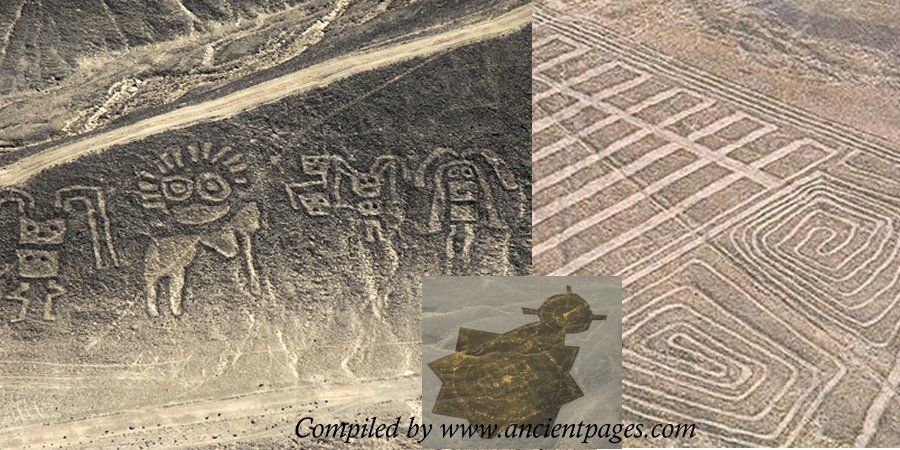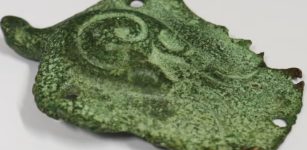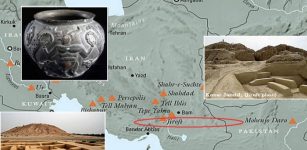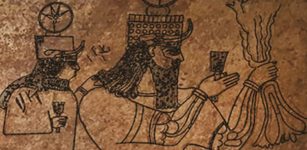Spectacular Square-Headed Creature And 143 New Nazca Geoglyphs – Discovered
Jan Bartek - AncientPages.com - Researchers report they have discovered 143 spectacular, never before seen geoglyphs on the Nazca Plateau and its surroundings in Peru.
One of the geoglyphs is a square-headed being that has a human form. Credit: Yamagata University
Among them is an odd square-headed creature that has human form. The amazing geoglyph is 5-meter-long. There are also spectacular geoglyphs of two-headed snakes, cats and what appears to be a dinosaur.
Headed by Professor Masato Sakai, researchers from the Japanese Yamagata University and IBM Japan spent two years (2016-2018) investigating the area, and they have now announced their findings.
The science team relied on AI (Artificial Technology), aerial pictures, as well as on-site investigations.
Left-top: “Human type” - Right-top: "Human type" processing photo. Left-bottom: “Two-headed snakes and people” - Right-bottom: "Two-headed snake and people" processing photo. Credit: Yamagata University
It’s not the first time unknown geoglyphs have been discovered on the Nazca Plateau. Last year enormous figures were spotted by low-flying drones. Among them were figures of a killer whale and a dancing woman.
Not long ago archaeologists also discovered a giant Orca geoglyph along with mysterious symbols and a ‘trophy head’.
In April 2018, Peruvian archaeologists reported as many as 50 giants figures had been unearthed by drones.
The Japanese science team suspected there could still be many more previously unknown geoglyphs and they were correct.
Located about 400 km south of Lima and listed as a UNESCO World Heritage Site, the Nazca Lines cover a staggering 1 000 square kilometers and the place has been described as “the most outstanding group of geoglyphs anywhere in the world”.
The Nazca lines are legendary and of great interest to archaeologists and historians. Japanese scientists think the geoglyphs they discovered date to around 100 B.C.A.D. 300.
“Since 2004, Yamagata University has been engaged in research on the world heritage “Nasca Lines” by Professor Sakai, focusing on UNESCO's world heritage.
Left: “Bird” over 100m long - Right: "Bird" processed photo. Credit: Yamagata University
However, the survey of the distribution of ground images is not yet sufficient, and with the expansion of urban areas, destruction has progressed and has become a social problem. Based on a joint experiment with IBM Japan, we have signed an academic agreement with IBM Watson Research Center, which has been researching remote sensing and AI.
Left: "Fish" - Right: "Fish" processed photo. Credit: Yamagata University
In the future, we will use the IBM PAIRS Geoscope (hereinafter referred to as IBM PAIRS), an AI platform that analyzes the company's three-dimensional spatio-temporal data at high speed and efficiently, and will continue to grasp the distribution of ground images and conduct field surveys.
We plan to create a distribution map based on. As a result, it is expected to understand the whole picture of Nazca Lines, accelerate research, and contribute to the protection of the World Heritage Nazca Lines,” the Yamagata University sais in a press statement.
Not far from the famous Nazca lines there is another impressive, ancient site called the Palpa Lines.
As Ancient Pages wrote earlier, “ the enigmatic Palpa lines in Peru are not as famous as the Nazca Lines, but these puzzling lines and geoglyphs that can only be properly viewed from the air are equally interesting.
The Palpa lines are located in between the towns of Sacramento, Pinchango, and Llipata. The purpose of the lines and geoglyphs is unknown. There are as many as 600 geoglyphs of giant size and they represent a series of human and animal zoomorphic figures, including the Familia Real (Royal Family), a group of eight figures on a hillside. Credit: Ancient Pages
Archaeological examinations reveal the Palpa lines are older than the Nazca lines and were most likely created by the Paracas culture, an Andean society that existed about 800 BCE and 100 BCE, in what today is the Ica Region of Peru.”
See also: More Archaeology News
Relying on high-tech it’s likely scientists can soon find more geoglyphs at the Nazca plateau, and perhaps even other sites that are are not so easy to access or can only be accurately studied from the air.
Written by Jan Bartek - AncientPages.com Staff Writer

